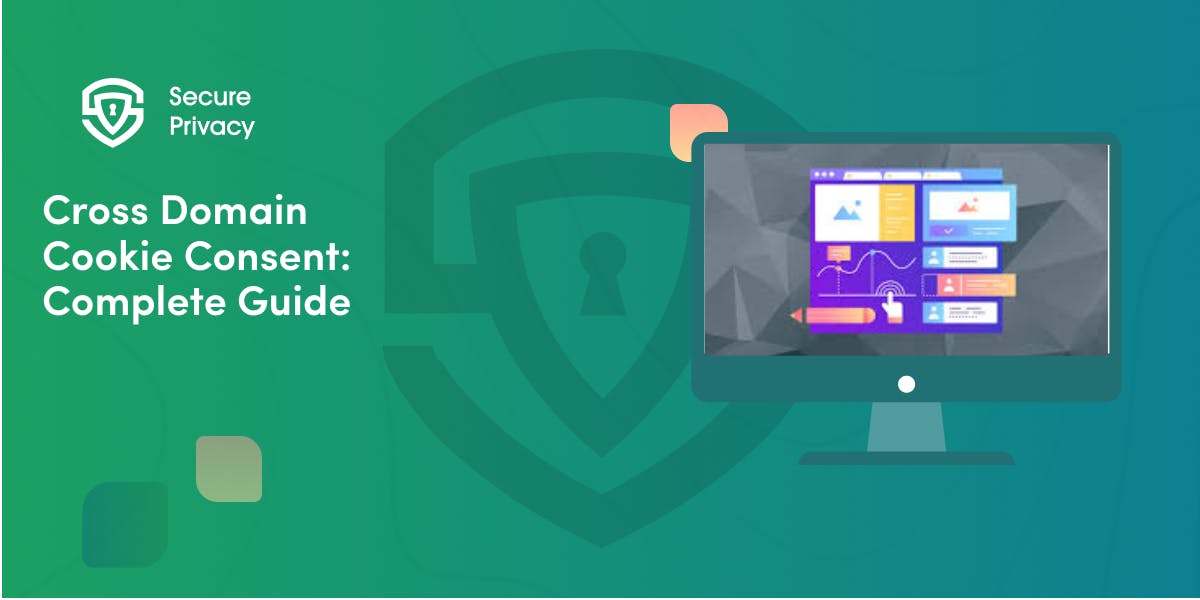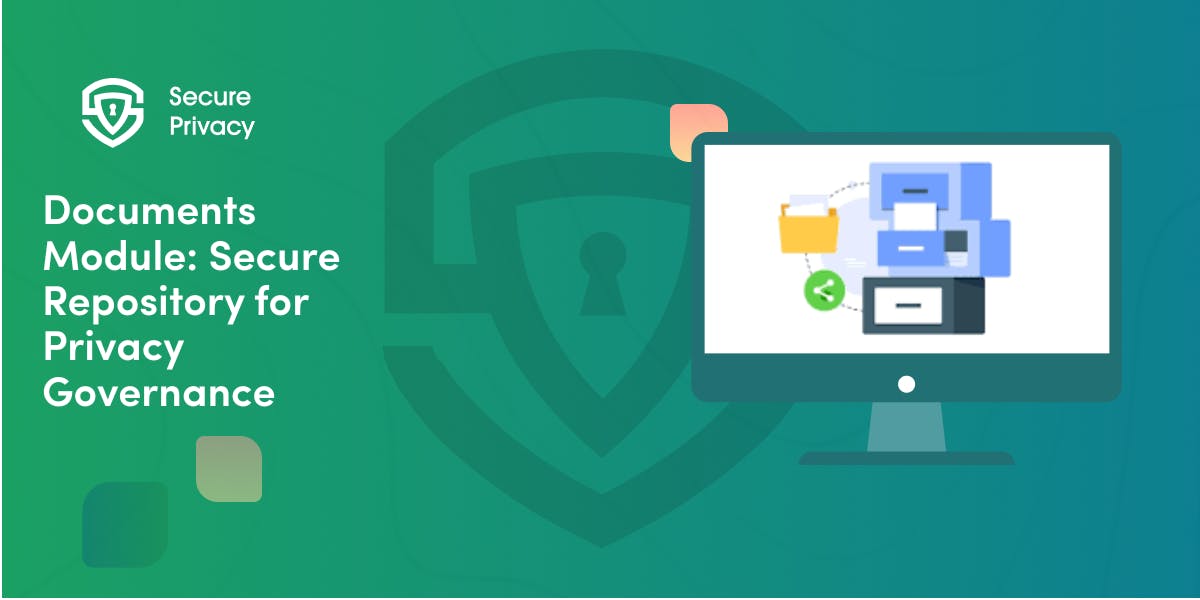CMP vs Cookie Banner: What's the Real Difference?
Your website's simple cookie banner might be creating a false sense of compliance while exposing your business to massive legal risks. If you think clicking "Accept" on a basic popup satisfies GDPR requirements, you're probably wrong — and regulators are getting increasingly aggressive about enforcing the difference.
Understanding CMP vs cookie banner differences isn't just technical: it's the difference between real compliance and regulatory roulette. Most businesses confuse the visible popup with actual management systems, not realizing that the banner is just the tip of the iceberg.
What happens behind the scenes — logging, preference management, script blocking, and audit trails — determines whether you're truly compliant or just going through the motions. Understanding what you actually need could save your business from fines, user trust issues, and the competitive disadvantage of being caught unprepared.
Privacy Requirements Are Not Optional
The Legal Reality Check
Privacy regulations have made user permissions mandatory across major markets including the EU (GDPR), California (CCPA), Brazil (LGPD), and dozens of other jurisdictions with evolving privacy laws. This isn't a nice-to-have feature — it's required legal infrastructure for any website serving users in regulated markets, underscoring the importance of policy consent management.
Enforcement has intensified dramatically with regulators specifically targeting non-compliant implementations. Recent enforcement actions show authorities examining not just whether websites ask for permission, but how they collect it, store it, and respect user choices throughout the entire user journey.
The stakes keep rising with GDPR fines reaching up to 4% of global annual revenue. CCPA penalties and emerging state privacy laws create additional obligations that many businesses underestimate until it's too late.
But How You Handle Permissions Determines Everything
Implementation quality matters more than good intentions. Having a popup doesn't automatically equal regulatory protection—the technical implementation, legal accuracy, and user experience design all determine whether your collection meets actual regulatory requirements.
Most basic banners fail regulatory tests including prior permission (blocking before approval), granular choices (specific category controls), and proper documentation (audit trails and records). These failures create immediate legal vulnerabilities.
What Is a Cookie Banner?
The Visible Interface Only
A cookie banner is simply the popup or notification that appears when users first visit your website, informing them about tracking usage and requesting permission. It's the user-facing element that most people associate with privacy protection — but it's just the surface layer.
Basic banners typically offer limited options like "Accept All," "Reject All," or simple "OK" buttons that don't provide the granular control required by modern privacy regulations. Many legacy implementations force users to accept all tracking or leave the website entirely.
Common Cookie Banner Limitations
No backend infrastructure means basic banners often can't store user preferences, maintain audit trails, or integrate with other marketing and analytics tools. They collect permissions but can't manage them effectively over time.
Limited customization capabilities restrict your ability to adapt requests to different user types, geographic regions, or regulatory requirements. Most basic banners use one-size-fits-all approaches that don't meet diverse regulatory needs.
Poor integration with existing marketing technology stacks means user choices often don't reach analytics platforms, advertising tools, or customer management systems. This creates regulatory gaps throughout your data ecosystem.
What Is a CMP: Complete Permission Infrastructure
Comprehensive Solution
A platform is comprehensive software that handles the entire permission lifecycle from initial collection through ongoing preference management, regulatory documentation, and integration with your complete marketing technology stack. This approach is at the heart of policy consent management.
CMPs include banners as their user interface but provide sophisticated back-end capabilities including storage, preference management, script blocking, audit trail maintenance, and integration with dozens of marketing and analytics platforms. This represents a fundamental shift from simple notification to comprehensive infrastructure.
Advanced CMP Capabilities
Real-time scanning automatically detects all tracking technologies on your website, categorizes them appropriately, and generates accurate requests that reflect your actual data collection practices rather than generic template language.
Script blocking and management prevents non-essential tracking from loading until explicit permission is obtained. This ensures true "prior approval" that regulators increasingly require for legal protection. Unlike simple banners, CMPs integrated with tools like Google Consent Mode v2 adapt in real time.
Comprehensive audit trails document exactly what permissions were collected, when they were given, what options users were presented, and how preferences changed over time. This documentation satisfies regulatory audit requirements automatically.
Geographic adaptation shows appropriate mechanisms based on user location. This ensures GDPR protection for EU visitors, CCPA requirements for California users, and appropriate collection for other regulatory environments.
Cookie Pop-up vs Full CMP: Critical Differences
Core Functionality Comparison
Shows cookie popup to users: Both cookie banners and CMPs display consent requests to website visitors, but CMPs provide more sophisticated, customizable, and legally compliant popup experiences.
Blocks cookies before consent: Only CMPs provide true prior consent by preventing non-essential cookies from loading until explicit permission is obtained. Basic banners often display consent requests while simultaneously setting cookies.
Stores user preferences: CMPs maintain secure databases of user consent preferences and choice history, while basic banners typically can't store or retrieve user choices across sessions or devices.
Logs proof of consent: CMPs automatically document consent collection with timestamps, user choices, and policy versions for regulatory audit purposes. Basic banners provide no compliance documentation.
Advanced Integration Features
Manages third-party scripts: CMPs control when marketing pixels, analytics tools, and other third-party integrations activate based on user consent. Basic banners can't manage complex script interactions.
Respects regional regulations: CMPs adapt consent collection to different regulatory requirements based on user location. Basic banners use one-size-fits-all approaches that often violate regional privacy laws.
Integrates with marketing tools: CMPs communicate consent choices to Google Analytics, advertising platforms, email marketing tools, and other business systems. Basic banners operate in isolation from marketing technology stacks.
GDPR Cookie Banner vs CMP: Legal Requirements
Prior Consent Implementation
GDPR's "prior consent" requirement means non-essential cookies cannot be set before explicit user permission is obtained. This requires technical infrastructure that blocks script execution until consent is granted—capabilities that basic cookie banners simply don't provide.
Real-time consent management ensures that user choices immediately affect all integrated systems. When someone withdraws marketing consent, every connected platform must stop processing their data instantly—coordination that requires sophisticated backend infrastructure.
Comprehensive Documentation Requirements
Consent logging obligations under GDPR and similar regulations require maintaining detailed records of what consent was collected, when it was given, what options were presented, and how choices evolved over time. Basic banners provide no documentation capabilities.
Audit trail completeness must demonstrate that consent collection processes meet all regulatory requirements including free choice, specific purposes, informed decisions, and easy withdrawal. CMPs automatically generate this documentation while basic banners leave businesses defenseless during investigations.
Geographic Compliance Complexity
Multi-jurisdictional requirements mean websites serving international users must adapt consent collection to different regulatory frameworks. EU users need GDPR-compliant granular choices, California users require CCPA opt-out mechanisms, and other regions have unique requirements.
Automatic geo-targeting shows appropriate consent mechanisms based on user location without requiring separate website implementations for different markets. This geographic intelligence requires sophisticated technical infrastructure that basic banners lack.
Cookie Consent Tool Comparison: When You Need a CMP
Essential for Modern Marketing
Any tracking beyond strictly necessary cookies requires CMP implementation for legal compliance. This includes Google Analytics, Facebook Pixel, email marketing pixels, remarketing tags, or any analytics that aren't essential for basic website operation.
Third-party integrations like social media widgets, customer service chatbots, or embedded content typically introduce cookies that require consent management. CMPs automatically detect and manage these integrations while basic banners miss most third-party tracking.
International Business Operations
Serving EU users makes sophisticated consent management mandatory regardless of where your business is located. GDPR applies to any organization processing EU resident data, making CMPs essential infrastructure for global businesses.
Multi-market operations require adapting consent collection to different regulatory environments without maintaining separate website implementations. CMPs handle this complexity automatically while basic banners create compliance vulnerabilities.
Risks of Relying Only on a Cookie Banner
False Sense of Security
Compliance theater creates dangerous overconfidence when businesses believe simple cookie popups satisfy complex privacy requirements. This false security prevents proper compliance investment until regulatory action forces expensive remediation.
Legal vulnerability increases dramatically when consent collection doesn't meet actual regulatory requirements. Regulators increasingly examine technical implementation rather than just accepting surface-level consent mechanisms.
Operational and Business Risks
Data quality degradation occurs when marketing tools can't determine user consent status, leading to campaign optimization based on incomplete or inaccurate data. This affects everything from audience targeting to conversion attribution.
User trust erosion happens when privacy-conscious visitors recognize inadequate consent mechanisms and lose confidence in your data practices. This trust damage often persists long after compliance improvements are implemented.
Partnership limitations arise when major platforms require sophisticated consent management for optimal functionality. Google, Facebook, and other advertising platforms increasingly require CMP-level consent integration for full feature access.
How a CMP Solves These Problems
Automated Compliance Management
Continuous cookie scanning identifies all tracking technologies on your website automatically, ensuring consent requests accurately reflect actual data collection practices without requiring manual audits or technical expertise.
Dynamic policy generation creates legally compliant cookie policies and consent interfaces based on your website's actual tracking behavior. This eliminates the guesswork and legal review typically required for compliance documentation.
Regulatory update automation keeps consent mechanisms current with evolving privacy laws across different jurisdictions. This happens without requiring manual monitoring of legal developments or costly compliance consulting.
Comprehensive Technical Integration
Marketing technology coordination ensures user consent choices reach every relevant platform including Google Analytics, advertising networks, email marketing tools, and customer management systems through automated integration.
Real-time script management blocks non-essential tracking until appropriate consent is obtained while immediately enabling approved data collection. This maintains both compliance and marketing effectiveness simultaneously.
Business Intelligence and Optimization
Consent rate analytics help optimize consent collection strategies by identifying which approaches, messaging, and user experiences generate higher acceptance rates while maintaining compliance and user trust.
Compliance monitoring provides ongoing visibility into consent collection performance, potential compliance gaps, and optimization opportunities. This helps maintain regulatory protection while improving business results.
Consent Management Platform vs Cookie Banner: Making the Right Choice
The difference between cookie banners and Consent Management Platforms isn't just technical — it's the difference between compliance theater and real privacy protection. As regulations continue tightening and user expectations evolve, businesses need infrastructure that provides genuine compliance rather than surface-level gestures.
Simple cookie banners might seem adequate for basic compliance, but they create false security that often proves expensive when regulatory enforcement arrives. CMPs that provide the comprehensive infrastructure needed for sustainable privacy compliance support business growth and marketing effectiveness.
Success in the privacy-first digital economy requires viewing consent management as essential business infrastructure rather than compliance overhead. Organizations that implement sophisticated consent management now position themselves advantageously for continued regulatory evolution while building competitive advantages through transparent privacy practices.
The choice between cookie banners and CMPs ultimately determines whether your business can effectively navigate the complex privacy landscape while maintaining user trust and operational effectiveness. In an environment where privacy violations create permanent reputation damage and massive financial penalties, comprehensive consent management becomes essential infrastructure for sustainable business success.
Frequently Asked Questions
Q: Can a simple popup ever be GDPR compliant?
A: Basic popups can meet GDPR requirements only in very limited circumstances where websites use truly minimal tracking. However, most modern websites use analytics, marketing pixels, or third-party integrations that require sophisticated management beyond what simple solutions can provide.
The technical requirements for prior permission, granular choices, and proper documentation typically necessitate full platform functionality.
Q: What's the minimum functionality I need for regulatory protection?
A: Minimum protection requires prior permission (blocking tracking until approval), granular choices (category-specific controls), storage and retrieval, audit trail documentation, and integration with your marketing tools to ensure user choices are respected.
These capabilities require platform-level functionality rather than basic popup implementations.
Q: How much more expensive is a CMP compared to a simple solution?
A: While platforms require higher upfront investment than basic popups, they often provide better ROI through regulatory protection, reduced legal risk, and improved marketing effectiveness. Many providers offer affordable entry-level plans, and the cost of proper management is typically minimal compared to potential GDPR fines or lost business from privacy violations.
Q: Can I upgrade from a popup to a platform later?
A: Yes, but migration can be complex depending on your current setup. You'll need to ensure data transfers properly, update integrations with marketing tools, and potentially refresh user permissions under new mechanisms.
Starting with a proper platform often proves more efficient than attempting upgrades from inadequate popup implementations.
Q: Do I need different solutions for different countries?
A: Quality platforms handle multi-jurisdictional requirements automatically, showing appropriate mechanisms based on user location. This geographic intelligence eliminates the need for separate implementations while ensuring protection across different regulatory environments.
Basic popups typically can't provide this sophisticated geographic adaptation.
Q: How do I know if my current solution is actually compliant?
A: Test whether your system blocks all non-essential tracking before permission, provides granular category choices, maintains records with audit trails, and integrates properly with your marketing tools.
If any of these capabilities are missing, you likely need platform functionality rather than popup-only implementation.
Q: What happens to my existing data when switching to a CMP?
A: Reputable platforms provide migration assistance for existing data, though you may need to refresh user permissions under new mechanisms to ensure full protection.
The migration process varies based on your current setup and the provider's capabilities.
Q: Can platforms work with my existing website and marketing tools?
A: Modern systems integrate with virtually any website platform and marketing technology stack through APIs, plugins, and tag management integration. They're designed to work with popular tools like Google Analytics, Facebook Pixel, email marketing platforms, and customer management systems without requiring significant technical changes.
Q: How long does it take to implement a platform vs a simple popup?
A: Basic popups can be implemented in hours, while platforms typically require days to weeks for full setup including integration, testing, and optimization.
However, platform implementation provides comprehensive protection that basic popups simply cannot achieve, making the additional time investment worthwhile for most businesses.
Q: Do platforms slow down my website compared to simple popups?
A: Well-designed systems have minimal performance impact and often improve perceived performance by properly managing when tracking scripts load. Advanced platforms use optimized loading techniques and edge computing to ensure management enhances rather than degrades user experience compared to poorly implemented popup solutions.
Get Started For Free with the
#1 Cookie Consent Platform.
No credit card required

Cross-Domain Cookie Consent: Complete Implementation Guide
Cross-domain cookie consent is a vital solution for companies managing multiple websites, subdomains, or digital properties under one corporate umbrella. Without proper implementation, users face repetitive consent banners as they move between related sites, creating friction and potentially exposing organizations to compliance risks.
- Legal & News
- Data Protection
- Cookie Consent

Google Consent Mode on Mobile: A Practical Guide for Marketers and Developers
Your mobile analytics are broken, and you might not even know it. Google consent mode mobile implementation has become mandatory for apps serving European users as of March 2024, yet most businesses are still using desktop-only solutions that fail catastrophically on mobile devices.
- Legal & News
- Data Protection
- Governance

Documents Module – Secure Repository for Privacy Governance
Privacy documents management has become the backbone of effective data protection programs as organizations face increasing regulatory scrutiny and complex compliance requirements. Without centralized document control, privacy teams struggle with scattered files, outdated versions, and inconsistent access permissions that create significant compliance risks.
- Legal & News
- Data Protection
- Governance

